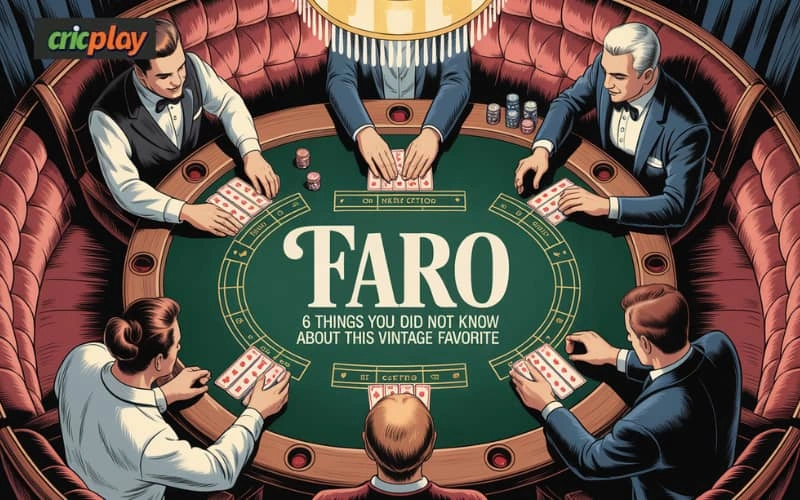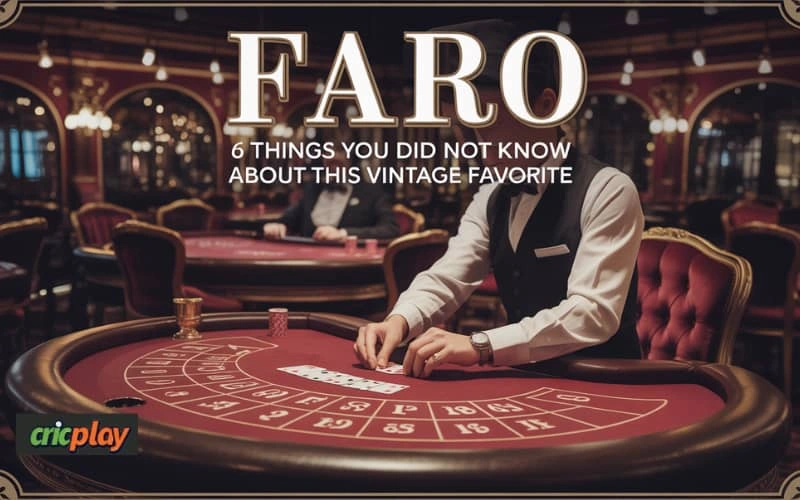Introduction to Casino Game Faro
Casino game faro, often referred to simply as faro, is one of the most iconic yet lesser-known card games in the world of gambling. Once dubbed the king of American gambling cricplay app halls during the 19th century, faro was more popular than poker in its heyday. It’s a fast-paced game based on a standard 52-card deck and offers relatively simple rules compared to many other classic casino games. Although modern casinos rarely feature faro anymore, the game has a rich history and unique gameplay that continue to fascinate enthusiasts and historians alike.
Understanding casino game faro provides a window into the roots of modern gambling culture. Its straightforward mechanics, player-friendly odds, and colorful past make it a topic worth exploring. Here are six fascinating things about casino game faro that most players and gaming fans may not know.
Faro Was Once the Most Popular Game in the US
Before poker became the dominant card game in casinos and private rooms, casino game faro was the go-to choice for gamblers across the United States. It first gained traction in the late 1700s and truly exploded in popularity during the 1800s, especially during the California Gold Rush. From saloons to gambling houses, faro was everywhere.
Unlike poker, which can be slow and strategic, faro offered a faster pace and required less decision-making. This made it particularly attractive to a wide range of players looking for action and excitement. Even the legendary Wild West towns like Tombstone and Dodge City had numerous establishments dedicated to casino game faro.
The Game’s Name Comes from Egyptian Royalty
One of the most surprising facts about casino game faro is the origin of its name. The game was originally known as “pharaon” or “pharaoh,” referencing the Egyptian kings. This name came from a French version of the game where a picture of a pharaoh appeared on one of the cards used in play. Over time, the name was anglicized to “faro,” especially as the game crossed over to English-speaking regions.
Despite its royal connotation, faro was always considered a game for the people. It spread quickly due to its accessibility and appeal to gamblers from all walks of life.

Cheating Was Rampant in Faro’s History
Casino game faro developed a reputation not just for its popularity but also for the high level of cheating involved. Both players and dealers often tried to manipulate the game to their advantage. Some common cheating methods included using rigged dealing boxes, manipulating the cards, or even replacing cards with duplicates.
This high level of dishonesty eventually contributed to the decline of the game in legitimate casinos. Regulators and honest players grew tired of the constant need to monitor gameplay for fairness. As casino environments became more professional and transparent, more secure games like blackjack and poker began to dominate the gambling scene.
The Faro Layout Resembles a Calendar
One unique characteristic of casino game faro is its betting layout, which looks quite different from the typical felt seen in blackjack or roulette. The table features a suit of cards from ace to king laid out in a horizontal line. Players place their bets directly on these cards based on the rank they believe will win.
Interestingly, the 13 cards used in the betting layout resemble the number of weeks in a quarter or the number of months in a lunar year. While this might just be a coincidence, some historians suggest it may have added to the game’s mystique and appeal. It’s a visual and structural element that sets faro apart from other casino games.
Faro Had Better Odds Than Most Casino Games
Many players today are surprised to learn that casino game faro actually offered better odds than most other games at the time. The house edge was low, often under 2 percent, depending on how the game was run. This made faro a favorite for strategic players who wanted to stretch their bankroll.
The main objective of the game was to correctly bet on which card would be dealt as the winner in each round. Unlike games heavily reliant on luck, faro allowed for some degree of prediction and card tracking. This balance of skill and chance added to the game’s enduring charm.
Faro Still Lives on in Popular Culture
While it may not be found in modern casinos, casino game faro continues to appear in movies, books, and historical reenactments. Classic western films often feature scenes of players crowded around a faro table, and it remains a symbol of vintage American gambling culture.
Faro is also preserved in museums and through live demonstrations during history-themed events. There are enthusiasts and collectors who still maintain faro tables, cards, and dealing boxes, ensuring that the game is not forgotten. In fact, learning to play faro has become a hobby for those interested in antique games and historical gambling traditions.
Conclusion
Casino game faro is a fascinating part of gambling history that deserves more recognition in the modern era. From its widespread popularity in the 19th century to its colorful history of cheating and elegant gameplay structure, faro offers a unique glimpse into the roots of American casino culture. It’s a game that combined speed, strategy, and a touch of mystique, making it a true vintage favorite.
Whether you’re a gambling historian, a fan of classic card games, or simply curious about forgotten games of the past, casino game faro is worth exploring. While it may no longer hold a place in today’s gambling halls, its legacy lives on as a symbol of a bygone era when the stakes were high, and the games were bold.




